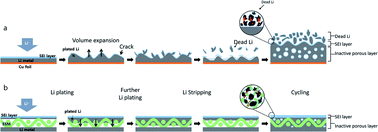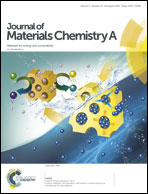Highly stable lithium metal battery with an applied three-dimensional mesh structure interlayer†
Abstract
Lithium metal is one of the most attractive anode materials, due to its high theoretical specific capacity and lowest electrochemical potential. However, low coulombic efficiency and serious safety hazards have still hindered the wide applications of next-generation batteries including Li–S and Li–air. Previous studies have suggested overcoming the problem by applying various structures of current collectors. These structures homogenize the Li ion flux or provide space for volume expansion. However, there are some limitations to solving problems occurring at the Li metal surface, because the current collector is underneath the structures of Li metal. In this work, we propose a facile and cost-effective strategy for stabilizing the lithium metal–electrolyte interface via a three-dimensional stainless steel mesh (SSM) interlayer. Its high specific surface area lowers the local current density and provides an electronic flow path for dead Li. Also, this structure leads to confinement of Li deposits and alleviates volume expansion. As a result, the Li anode with the SSM interlayer operated at current densities of 1 mA cm−2 (1C rate) and 5 mA cm−2, and it exhibited a longer cycle-life than planar structures in a symmetrical cell configuration.



 Please wait while we load your content...
Please wait while we load your content...